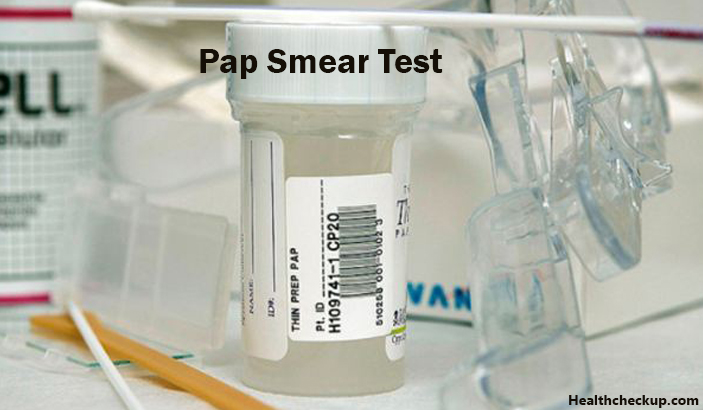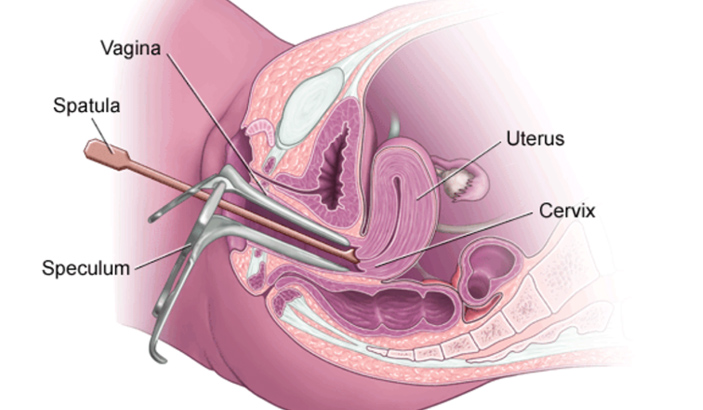Cervical cancer has been found to be the fourth most common cause of cancer-related deaths among women globally. Pap smear test results show the presence of abnormal, precancerous or cancerous cells in the cervix, which is the lowest part of the uterus that opens at the top of the vagina.
Regular Pap smears can help detect cervical cancer. A Pap smear test is essentially the microscopic examination of cells scraped from the uterine cervix. Risk factors for cervical cancers include circumstances that increase the chances of being infected with Human papillomavirus (HPV) and other factors including:
- Females having multiple sexual partners
- Starting to have sexual relationships at a young age
- Weakened immune systems caused by the presence of cancer affecting other parts of the body or due to an organ transplant
- History of cancer in the lower genital tract
- Smoking
What Is A Pap Smear Test For?
A Pap smear is a simple, quick, and usually, a painless screening test used to detect cancer or precancer of the uterine cervix. Pap is actually the shortened form of the name of the doctor who developed this important screening test. The Pap smear test involves collecting a few cells from the cervix and observing them under a microscope. A Pap test is used to recognize any abnormal changes to the cells in the cervix that, if left untreated for a long time, could develop into cancer. The test can also detect certain viral infections such as the human papillomavirus that is known to cause cervical cancer. It would be delighting for women to know that most cell changes are not very dangerous and will either clear naturally from the body or will go away with the right treatment.
Early detection of cervical cancer through Pap smear test results gives patients a greater chance of cure. Also, as mentioned earlier, a Pap smear test can help detect changes in the cervical cells that suggest the possibility of cancer developing in the future. Detecting the abnormal cells earlier with a Pap smear will be the first step in halting the development of cervical cancer.
[Read: What Are The Effect Of Abnormal PAP Smear Test ]
Pap Smear Test Procedure
A Pap smear is usually a part of a pelvic examination and is accompanied by a breast examination conducted by a gynecologist. A Pap smear test usually takes a minute or two to be performed and is usually conducted in the doctor’s office. During the procedure:
- The patient lies on her back on the examination table with her knees lifted up and bent, and her feet resting on stirrups. When the patient is lying in this position, the doctor will insert a small instrument made of metal or plastic called the speculum. The speculum helps in holding the walls of the vagina apart to allow a clear view of the cervix.
- Once the speculum is in place, a sample of the mucus and cells will be scraped off from the cervix and endocervix i.e., the opening of the cervix, using a wooden spatula or a small cervical brush.
- Once the sample is obtained, the sample of cells is evenly applied to a glass slide and sprayed with a fixative and sent to the lab for a close examination of the cells under a microscope. Alternatively, a new kind of Pap smear known as the ThinPrep test is used by gynecologists wherein the cell sample obtained from the cervix is rinsed into a vial and sent to the lab for slide preparation and examination.
- A cytologist, a specialist trained to examine cells and interpret the Pap smear analyses both types of tests.
Most women feel nothing at all while the test is being conducted, but a few of them may feel a little pinch or pressure. Staying relaxed and breathing slowly and concentrating your stomach and legs might help avoid any discomfort. If you feel excessive pain in spite of trying to relax during the procedure, you should inform your doctor.
Also, a woman may experience a small amount of spotting immediately after the procedure, but excessive bleeding is abnormal and should be reported to the doctor right away.
Who Needs a Pap Smear and How Often?
Your gynecologist and you will decide when it is time for you to begin Pap testing, and how often you will need to get it done. In general, most gynecologists suggest patients begin Pap tests at age 21.
It is usually recommended for women aged between 21 to 65 years to repeat Pap testing every 3 years. Women aged 30 years and above can change the frequency of Pap testing to once in 5 years if the procedure is combined with the test for HPV.
If you have certain risk factors such as:
- A diagnosis of cervical cancer or if previous test results showed precancerous cells
- HIV infection
- A deteriorated immune system caused by an organ transplant, chemotherapy or a prolonged corticosteroid use
Your doctor may suggest more frequent Pap testing irrespective of your age.
A woman and her doctor can consider stopping Pap testing if she has undergone a total hysterectomy, i.e., the surgical removal of the uterus including the cervix. If the hysterectomy was performed for noncancerous conditions such as uterine fibroids, you can stop Pap testing. However, if the hysterectomy was done for a precancerous or cancerous condition of the cervix, it is recommended that you continue routine Pap testing.
For women aged 65 years or more, Pap testing is no longer required if their previous test results have been negative.
Pap Smear Test Results Explained
The result of a Pap smear test is said to be negative when only normal cervical cells were discovered during your Pap smear, and additional tests or treatment won’t be required until you’re due for your next Pap smear.
Your Pap smear test results is said to be positive if any abnormal or unusual cells are discovered in the smear. However, a positive result does not always mean that you have cervical cancer. The meaning of the positive result depends on the types of cells discovered in the test.
The following are the terms used to describe your positive test results, along with the next course of action that will be needed:
Atypical Squamous Cells of Undetermined Significance (ASCUS)
Squamous cells are thin and flat cells that grow on the surface of a healthy cervix. In the case of ASCUS, the Pap smear shows abnormal squamous cells, but the changes in the appearance of the cells do not indicate that the cells are precancerous. Your doctor will reanalyze the sample with a liquid-based test to examine the presence of cancer-causing viruses such as HPV. If no dangerous viruses are present, the patient should not be worried, but if the test shows the presence of high-risk viruses, further tests will be conducted by the doctor.
Squamous Intraepithelial Lesion
This term indicates that the cells collected in the Pap smear may be precancerous. If the changes in the size, shape and other characteristics of the cells are minor, the precancerous lesion may take years to turn cancerous. But, if the changes are major, then the lesion may turn into cancer in a short time. Therefore, additional diagnostic testing will be necessary.
Atypical Glandular Cells
If atypical glandular cells appear in the smear, it is unclear if they’re cancerous. Further testing will be required to determine the cause and the significance of these abnormal glandular cells.
Squamous Cell Cancer
This result suggests that the cells in the Pap smear are so abnormal that the cytologist is almost sure that cancer is present.
If your Pap smear test results are abnormal, your doctor will perform ‘colposcopy,’ a procedure in which a special magnifying instrument called the colposcope is used to examine the tissues of the cervix, vulva and the vagina. Your doctor will also take a tissue sample from any areas that appear abnormal, and send it to the laboratory for a definitive diagnosis.
Medically Reviewed By

I am an experienced Medical/Scientific writer with a passion for helping people live a happy healthy life. My thirst for writing has followed me throughout the years – it is there when I wake up, lingering at the edges of my consciousness during the day, and teases me at night as I go to sleep.









